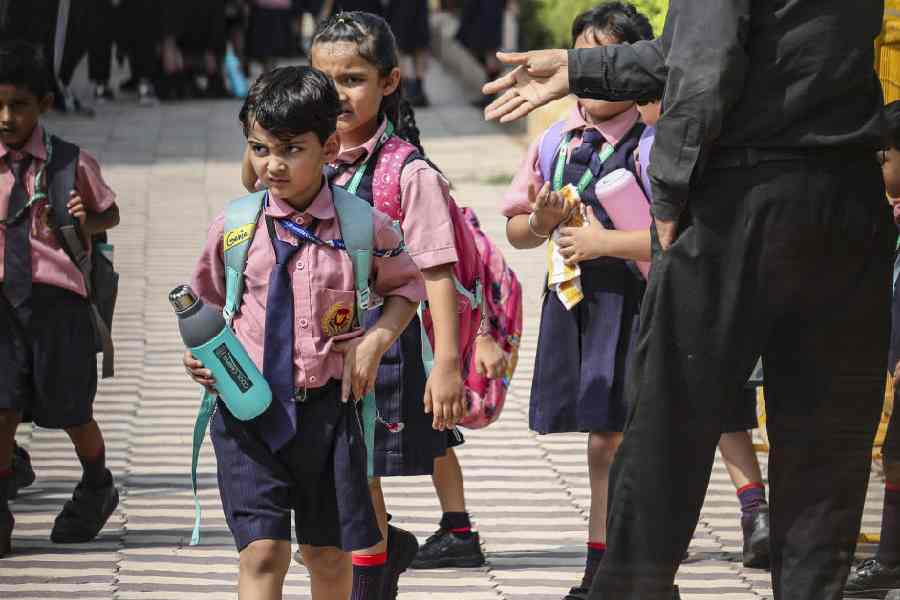 |
| Kabila Begum, a resident of Balbola village, retrieves items from her damaged house. Picture by Eastern Projections |
On a makeshift cot by the side of National Highway 37, a tired Muzzamil Ali is trying to feed his four-day-old baby goat?s milk with a spoon. For the past two days, Muzzamil has not left his daughter for a second. On October 8, two days after the baby was born, Muzzamil?s wife was swept into the darkness by a giant wave of flood, which hit Bolbola in Goalpara district with savage force. When the water came, Muzzamil picked up his baby and somehow managed to scamper to the top of his house. His wife, fast asleep after the labour-induced fatigue, perhaps, did not even know what hit her.
In Bolbola, on that fateful night, hundreds of people perished in the flash floods. In nearby Krishnai and Agia, there were many others who met the same fate. The number of cattleheads dead will reach 1,000, if there is ever a count. For Muzzamil, it was by sheer luck that two of his goats survived. But Muzzamil, a farmer, is not very sure whether his baby will survive the ordeal.
In Goalpara, the tales of suffering and grief stretch all along National Highway 37 ? many of the heart rending tales will never be told for there is no one left of families. The fertile land on both sides of the road has been turned into a graveyard in one single swipe of nature?s scimitar. Sure, there is no blood on the ground. Only bodies ? both human and cattle. In fact, there are bodies everywhere. Floating on the river Krishnai and on the Jineri. Bodies sticking out from receding waters in the paddy fields.
Bolbola, Agia and Krishnai were never prepared for a disaster of such magnitude. The people had no reason to expect such a deluge. Not even during the rainy season. For this region is not flood-prone. People of Krishnai, in fact, travel miles to ?see? floods.
Lessons to learn
The flash floods, which hit Goalpara last week, may have been a natural disaster that cannot be predicted. But there are lessons to be learnt from the tragedy. In fact, the floods in Goalpara and in other parts of the state in this time of the year have given the planners something to ponder about. What happened in Goalpara happened a few months earlier in Sonitpur district along the Assam-Arunachal Pradesh border. The human toll may have been not as high but the magnitude of devastation in Bordikorai was similar ? when rushing waters from the hills in Arunachal Pradesh in mid-July flattened several villages. After the waters receded, Bordikorai resembled a site subjected to carpet bombing during a war. Even the ?normal? floods in the state ? the annual cycle of death and destruction ? has shown a different pattern for the past couple of years. The scale of flooding and devastation simply left the people and the government perplexed. Such was the situation that even the Assam Assembly?s budget session was suspended for a week to enable the legislators to go back to their constituencies and help in relief and rehabilitation. During a discussion on the floods in the Assembly, both chief minister Tarun Gogoi and leader of the Opposition Brindaban Goswami had maintained that Assam has to live with floods till a permanent solution is found.
Experts have pointed out that the changing nature of floods in Assam is due to many reasons, including a gradual shift in the course of the Brahmaputra and the massive destruction of the forest cover in neighbouring states like Meghalaya and Arunachal Pradesh.
After the Goalpara floods ? caused by water flowing down from the Garo hills in Meghalaya ? chief minister Tarun Gogoi admitted the gravity of the situation caused by denudation of the hills in the neighbouring states.
Dispur, according to Gogoi, will move the Union ministry of environment and forests for effective measures to restore the green cover in the hills. ?Now the floods have assumed a different character. Which means that they have to be tackled differently,? Gogoi said. Even the unprecedented flooding in the capital city of Guwahati last week is said to have been caused by massive earthcutting in Meghalaya?s Khanapara area.
Officials at the Central Water Commission said that due to the denuded hills, the rainwater flows down faster, resulting in rapid flooding in the plains. They also pointed out that the growing imbalances in the Himalayan ecosystem have changed the very face of floods in the Northeast. In summer, when the glacial ice melts, the water flows down very fast through the denuded hills, flooding the plains with huge volume of water in a short time.
Dispur delay
The Goalpara floods exposed the sheer lack of preparedness on the part of the civil administration to deal with such crisis. This despite the state having a disaster management cell under a United Nations programme.
At Goalpara, the civil administration took nearly two days to respond to the crisis even as the affected people struggled to stay alive. For till three days of the killer wave, the only relief the people got was a mere 3 kg of rice per family. People living in makeshift huts on National Highway 37 were literally crying for potable water. It was after three days that the district administration started installing deep tubewells. Medicines and medical aid to the affected came from the army initially.
A member of the Indian Red Cross Society (IRCS) said in view of the changing pattern in floods, the administration?s response mechanism has to be devised on a different line to enable quick and efficient relief to the people. ?The system has to be strengthened from the grassroots level. Now that mobile phone network is available everywhere, even panchayat-level functionaries can be accommodated in the disaster management system for an effective information network,? the Red Cross official added.
Last week in Agia, a school student who saw his father being swept away to death, said he got his first meal nearly 48 hours after the killer wave struck.
?We took shelter on the highway, but there was no relief from the government for two days,? he said. A relief worker from a voluntary organisation said government officials entrusted with relief and rehabilitation wait for the situation to ?normalise? before moving into the disaster-struck areas. So much for disaster management!











